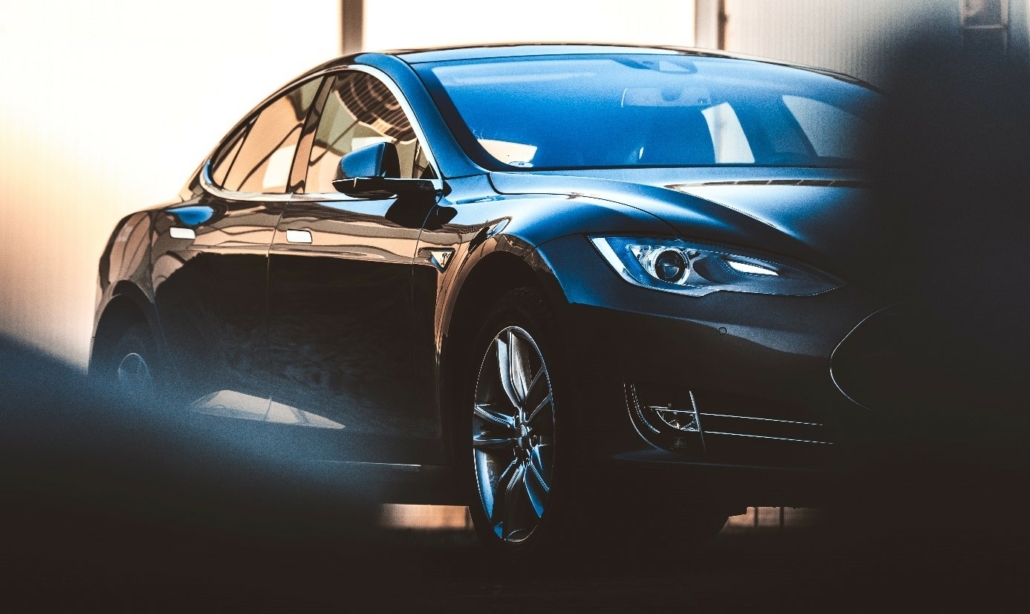Electric vehicles – the saviour of the planet?

Climate change is a global concern; hence it affects all countries and regions, however, with different magnitudes and rates [1]. The biggest driving force influencing climate change is fossil fuels, which include coal, oil and gas, contributing more than 75% of all greenhouse gas (GHGs) emissions, including almost 90% of all carbon dioxide emissions [2]. The transport sector, especially road transport, accounts for around a quarter of global energy use and related GHGs. To keep the long-term increase in the global mean temperature below 2°C, it has been suggested that reductions in global GHGs emissions of 50% to 85% from levels noted in 2000 must be made by 2050 [3].
However, how to achieve this result since it is estimated that by 2050 the number of cars will double?
High potential in GHGs emission reduction is associated with electric vehicles (EVs). New gasoline and diesel vehicle sales were prohibited beginning in 2040, according to announcements made in the summer of 2017 by the UK and France. This restriction has already been advanced until 2030 by the UK. Therefore, it is already possible that internal combustion engines will no longer be used for personal transportation. This summer, Volvo, a Chinese-owned automaker, announced starting in 2019, all of its vehicles will be either electric or petrol hybrid driven. By 2025, Volvo’s Chinese owners, Geely, hope to sell one million EVs [4]. It would be a huge success, considering that in 2021 Volvo sold 698 700 cars, of which 56 883 were electric cars (both plug-in and fully electric) [5].
EV is not a new invention. The technology has been developing for a long time; the first attempt to create an EV was made in 1832 by Robert Anderson [6]. The biggest advantage of modern EVs is energy efficiency; 75-95% of the available energy is converted into motion. While internal combustion cars can only put up to 30% of the energy contained in its fuel into motion, the rest is lost in heat and friction [4].
EVs are considered cars that produce no pollutants and no hazardous gases. Is that fully true?
The manufacturing process of EVs releases a similar amount of CO2 as the production of internal combustion cars, but only when battery manufacturing is excluded from the calculations. Production of batteries requires large quantities of rare metals lithium, cobalt and nickel [4]. Their mining is labour-intensive and necessitates chemical input and large quantities of water, frequently from water-scarce regions. What is more, it can produce toxic waste and impurities [7]. Additionally, the cost and the difficulty of recycling processes causes that lithium-ion battery recycling is still very low, at less than 5%, the rest ends in landfills [8]. Regulations are predicted to play a significant part in this process since recycling play a crucial role in the future of the industry because it helps to increase sustainability and lessen resource scarcity.
Engineers and scientists are trying to find different solutions for gathering energy, like sand batteries, which seem to be a promising technology. Sand, when heated to 600℃, can become a battery and, with the application of thick insulation, can keep the temperature inside even when it is freezing outside. Not only does sand have a much lower environmental impact than lithium, but it also does not involve any chemical reactions and does not degrade like lithium-ion batteries. The drawback of this technology is that sand batteries can store 5 to 10 times less energy than chemical batteries. However, the generation of 8 MWh of heat energy by sand battery costs $200 000 while the generation of the same amount of energy by lithium-ion battery costs $1 600 000. The main question is whether it is possible to scale up this technology to produce a considerable amount of electricity in addition to heat [9].
Indirect pollution is related to the type of electricity grid used to charge batteries. A gas-fired power plant emits 350–400 grams of CO2 per kWh, but a coal-fired power station releases ~650 grams of CO2 per kWh. When considering the emissions produced during the manufacturing process of renewable energy sources like solar panels or wind turbines, the emissions produced per kWh are approximately 36g CO2 [7]. Research demonstrates that even after accounting for these electricity-related emissions, an EV often emits fewer GHGs than the typical new gasoline vehicle. However, the overall GHGs associated with EVs might be significantly lower if more renewable energy sources, such as wind and solar, are employed to produce electricity [10].
Another important aspect is related to the pollution emitted from tires. According to the International Union for Conservation of Nature, tires are one of the main sources of microplastic pollution in oceans [11]. Because of the use of battery power, electric cars are much heavier than combustion engine cars and, together with the instant acceleration and, therefore, instant torque, because more stress is put on the tyres. Engineers are trying to capture the pollution from tires into the boxes placed above the tire, which on the way of electrostatic forces, could collect shed tire particles. However, until now, it is at the prototype stage [11]. Moreover, manufacturers of tires are trying to improve tire quality to increase their longevity and reduce the amount of noise and pollution emissions.
Personal transport is one thing, but a reliable freight transportation infrastructure that can move goods effectively, safely, and sustainably is an essential component of a sustainable society. Diesel trucks have only a 4% share of the total road transport. However, they are responsible for almost half of the transportation sector’s smog-forming pollution and a quarter of all climate emissions [12]. There are some attempts made to change internal combustion heavy trucks into electrical ones. Volvo started series production of electrified truck Volvo FM, FMX, and FH series, that could operate at a combined weight of 44 metric tons [13]. Nevertheless, it should be noticed that the kilometres range of an electric truck is equal to 380 km, then it needs to be charged, while an internal combustion truck can be driven over 2000 km using only one tank of 630 L. Although EVs seem to be the right step towards sustainability and GHGs reduction, challenges still remain.
Written by Magdalena Fabjanowicz, Gdańsk University of Technology
References:
- EPA. International Climate Impacts. Accessed November 26, 2022. https://19january2017snapshot.epa.gov/climate-impacts/international-climate-impacts_.html
- United Nations Climate Action. Causes and Effects of Climate Change. Accessed November 26, 2022. https://www.un.org/en/climatechange/science/causes-effects-climate-change
- H. Ma, F. Balthasar, N. Tait, X. Riera-Palou, A. Harrison, Energy Policy, 44 (2012), 160-173, https://doi.org/10.1016/j.enpol.2012.01.034.
- YPTE. Electric cars. Accessed December 5, 2022. https://ypte.org.uk/factsheets/electric-cars/what-are-the-downsides-to-electric-cars#section
- Volvo cars. Press Releases: Volvo Cars reports sales of 44,664 cars in July. Accessed December 29, 2022, https://www.media.volvocars.com/global/en-gb/media/pressreleases/303268/volvo-cars-reports-sales-of-44664-cars-in-july
- Energy.gov. Timeline: History of the electric car. Accessed November 28, 2022. https://www.energy.gov/timeline/timeline-history-electric-car
- Climate Portal. How much CO2 is emitted by manufacturing batteries? Published July 15, 2022. https://climate.mit.edu/ask-mit/how-much-co2-emitted-manufacturing-batteries
- AZO Materials. Worldwide Regulations on lithium-ion battery recycling. Published January 24, 2022. https://www.azom.com/news.aspx?newsID=57992
- BBC. How a sand battery could transform clean energy. Accessed December 29, 2022. https://www.bbc.com/future/article/20221102-how-a-sand-battery-could-transform-clean-energy
- EPA. Electric Vehicles Myths. Published October 18, 2022. https://www.epa.gov/greenvehicles/electric-vehicle-myths#Myth1
- The Japan Times. When driving, tires emit pollution. And EVs make the problem worse. Published September 4, 2022. https://www.japantimes.co.jp/news/2022/09/04/business/tech/electric-vehicles-tires-climate/
- GreenBiz. A new way o track truck pollution. Published October 5, 2022. https://www.greenbiz.com/article/new-way-track-truck-pollution
- CNBC. Volvo starts series production of heavy-duty electric trucks, targets 50% of sales by 2030. Published September 14, 2022. https://www.cnbc.com/2022/09/14/volvo-starts-series-production-of-heavy-duty-electric-trucks.html


